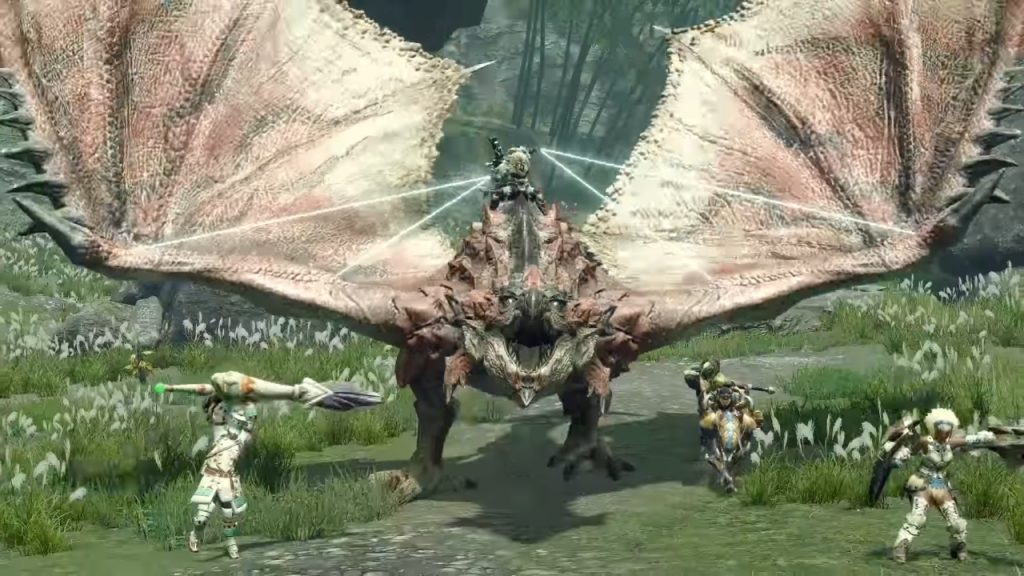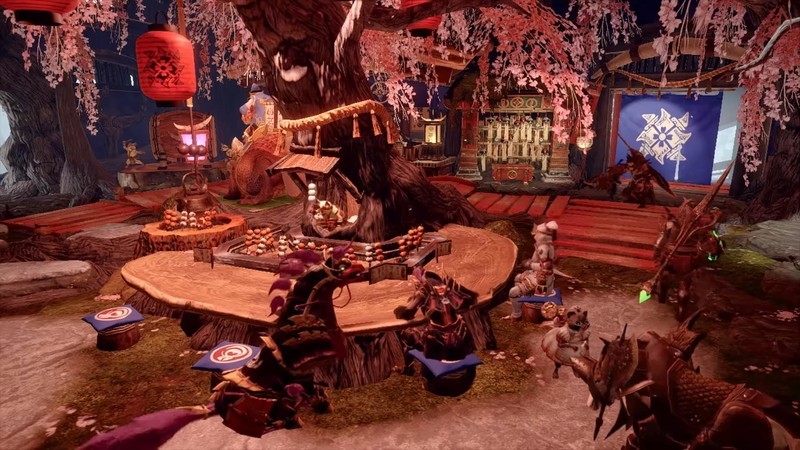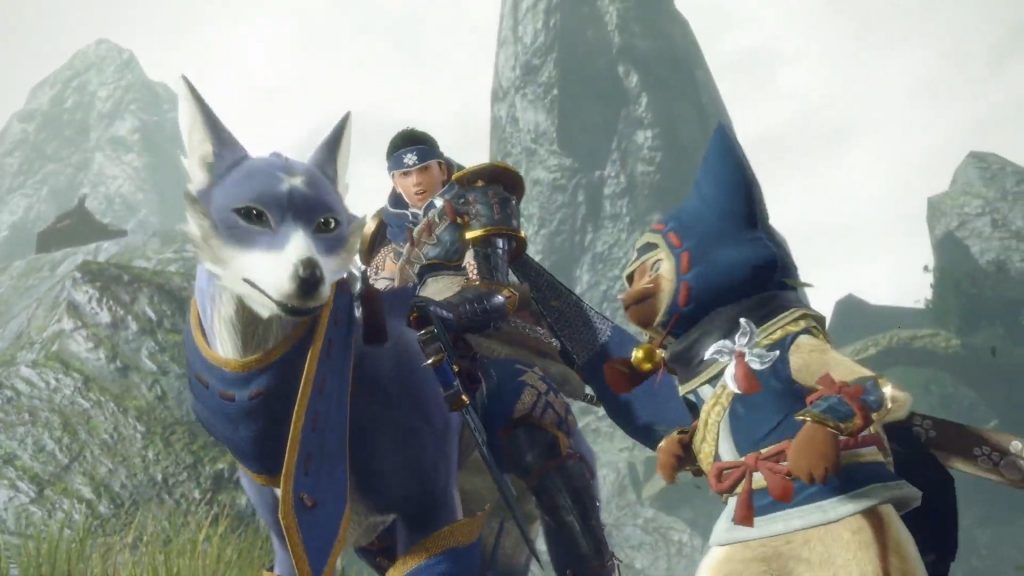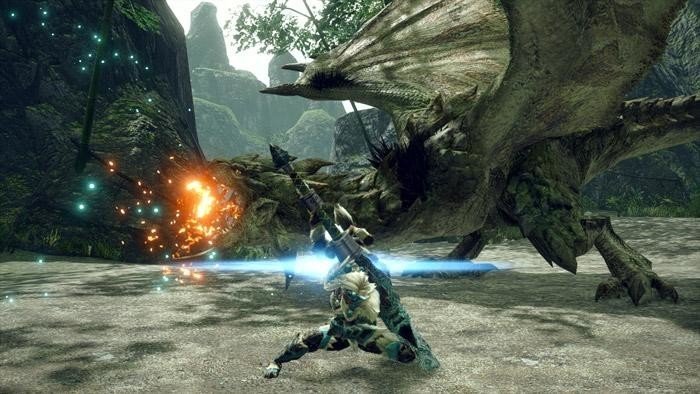For many, Monster Hunter World was the core concept fully realized. Fights were dynamic, there was more to worry about than just the objective and there was a clear path of greatness. As a result, fans have repeatedly asked for it on Switch but unfortunately, that has yet to happen. However, instead of porting a beloved title, Capcom instead offered a new take on the franchise with Monster Hunter Rise. New mechanics and challenging hunts take the stage on this adventure but will it find the same magic they had with Monster Hunter World? Here’s our Monster Hunter Rise review.
In Monster Hunter Rise players find themselves in Kamura Village. The relatively peaceful village has continued to grow and prosper until rampages start to occur. As a result, Magnamalo appears and this monster needs to be stopped, along with the growing problems eliminated. Most of the progression is about expanding the lore around Manamalo and making it seem like a larger-than-life threat, not unlike what we saw in Monster Hunter World, which continues until it’s ultimately defeated.

Naturally, most of the adventure exists to give players structure and understanding before attempting other, far more difficult, hunts. This starts slowly with a vague structure. Players have to do village missions, usually short, straightforward, and basic, with guild quests offering a handful of monsters to fight. Much to Monster Hunter Rise’s credit, it feels a bit more accessible than previous entries with a slow and methodic approach to the mechanics. Fans might find the refresher course tedious, though newcomers will likely love to see all it has to offer.
Hunts are structurally similar to previous entries. Every quest sends players to a specific location to accomplish some task. Usually, these are finding something, killing peons, or, in most cases, locating a specific monster. In Monster Hunter Rise, things are a bit easier. Instead of following tracks and other indications, players are told where all the monsters in question are. The tricky part isn’t finding them, it’s locating the right one. This is due to there being multiple monsters that won’t be revealed until players lay eyes on it.

Easier tracking isn’t the only change in Monster Hunter Rise. Hunters also get a new companion known as a Palamute. Similar to how Palicos are based on cats, Palamutes are basically wolves that aid in combat. They also provide a quicker, stamina-free, way of traveling the world, making for a faster and more stylish way to fight problematic creatures. It doesn’t take long to master them and they certainly streamline some of the less interesting parts, without taking away from the core chase down enemies and kill them gameplay loop.
Wirebugs also add a lot and offer some interesting new ways to play. These replace previous items like a clutch claw as a mobility item and have their own weapon-specific attacks. As a result, climbing is a lot easier, along with it being an easy way to close the gap between your current location and the target. As for the weapon-specific moves, they all have their place and invaluable for hunters of any skill level, it just comes down to how beneficial that play might be. Sometimes it’s better to stun monsters, other times you’ll want to maximize damage and occasionally the best action is using them. As a dual blade user myself, the explosive attack they offer is a great way to do a lot of damage in a specific location, making it easier to break certain parts.

To prevent them from being overpowered, there are a set number of users per hunt, and using them results in a modest cooldown. Finding more wirebugs will momentarily increase your reserve, rewarding anyone who wants to prepare for a hunt before rushing.
Another welcome change is simplifying mounting. This option will occur when two or more monsters fight one another and do enough damage or through wirebug attacks. Once mounted, the monster in question can be controlled and used against the other monster in question. This is a great way to neutralize hostile threats and maximize damage, with it being simple enough to reward a keen eye over careful planning and resources.
Monster Hunter Rise also adds a new defense mode known as rampage. These are similar to some of the large-scale offensives in Monster Hunter World and require a number of tasks are performed against multiple fearsome monsters. These are a nice change of pace, not just for the different mechanics but to also highlight how villages survive without defeating every nearby threat. However, due to the complexity and number of things going on, it’s a mode that greatly benefits from other players assisting. AI does a decent job, well enough where it can be done anyway, though there will be many times another person wouldn’t have this problem or make that mistake.

Unfortunately, one of the biggest downsides to Monster Hunter Rise is Nintendo Switch. While it maintains a stable frame rate and does its best with the hardware, it isn’t a particularly pretty game to look at. Character models, backgrounds, and even settings are a bit on the rough side. This is an unfortunate choice, given the Japanese look and feel adds a lot of style and quality is there, Switch just can’t make full use of it.
Monster Hunter Rise Review – Verdict
Monster Hunter Rise basically does what you’d expect. The core experience is relatively unchanged, there are just more tutorials and certain elements were simplified to make it more accessible. This is a massive bonus for anyone hoping they don’t run into a clueless online player, though it can make the first couple of hours drag. Thankfully, the new mechanics and elements breathe new life in the franchise and is certainly enough to hold someone’s attention for a substantial amount of time.
[Editor’s Note: Monster Hunter Rise was reviewed on Nintendo Switch and a copy was provided to us by the publisher for review purposes.]
